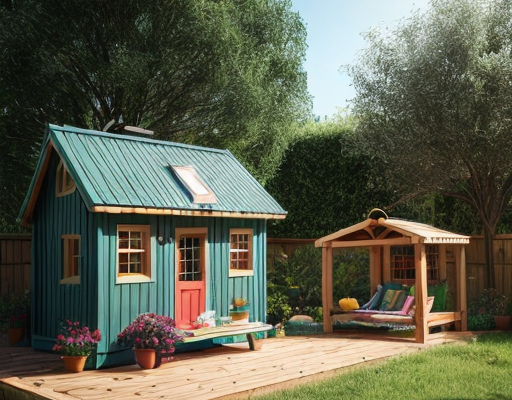
How to Plan a Family DIY Birdhouse and Bird Feeder Building Day
“`html
How to Plan a Family DIY Birdhouse and Bird Feeder Building Day
Introduction to Birdhouse and Bird Feeder Building Day
Building birdhouses and bird feeders is a fantastic way to bring together family members of all ages for a day of creativity, education, and outdoor enjoyment. Not only is it a fun DIY project that stimulates engagement with nature, but it also provides essential shelter and food sources for feathered friends. In this guide, we’ll explore the step-by-step process of planning an unforgettable birdhouse and bird feeder building day that your family will cherish.
Getting Started: Preparation Is Key
Preparation is the foundation of a successful DIY craft day. Gather all necessary supplies ranging from lumber, saws, hammers, and nails to paints, brushes, and decorations beforehand. Make sure to also consider the safety equipment needed, such as goggles and gloves, especially when involving younger family members. It’s equally important to allocate enough space for each participant to work comfortably and safely.
Choosing the Right Designs
Selecting the design for your birdhouses and feeders is an essential step. Offer different options that cater to various skill levels so that everyone can enjoy the building process. Use this as an opportunity to research local bird species and their habitation preferences, which can serve as an educational aspect of the project.
For the Little Ones: Simple and Safe Projects
Keep the young ones engaged with simpler projects. Bird feeder designs such as a pine cone lathered in peanut butter and birdseed or a cardboard tube feeder are ideal. These projects require minimal tools, making them safer and more suitable for children.
For the Experienced Builders: Complex and Customizable Designs
Offer more complex birdhouse designs to those with previous building experience or a knack for craftsmanship. Encourage them to add unique elements like viewing windows or intricate roof designs, providing room for personalization and challenging creativity.
Understanding the Importance of Location
Selecting the right location to hang your birdhouse or feeder contributes to the likelihood of it being used by birds. Consider factors such as predators, availability of natural food, and the distance from human activity. It’s also beneficial to discuss these aspects as a family, combining the DIY project with valuable lessons about the local ecosystem.
Scheduling the Day
To keep your family’s birdhouse and feeder building day enjoyable and stress-free, establish a general schedule or timeline. Set times for beginning the project, taking breaks, and for clean-up. Remember to be flexible, as the purpose of the day is to have fun and learn together, not to rush through the activity.
Assigning Tasks and Teamwork
Children are more likely to stay engaged when they feel they have an important role in the project. Assign age-appropriate tasks to each family member, emphasizing the importance of their contribution. Facilitating teamwork and collaboration between siblings or across generations can heighten a sense of accomplishment upon completing their birdhouses and feeders.
Safety First: Tool Handling and Supervision
Safety should be a top priority throughout the building project. Supervise children closely when handling tools and provide direct instruction on proper use. Keep the workspace tidy to prevent accidents, and always have a first-aid kit accessible.
Customization and Decorations
After constructing the foundations of your birdhouses and feeders, engage your family’s artistic side by decorating. Provide a variety of materials for customization, from non-toxic paints to natural elements like twigs or stones. Encourage each participant to express their personality through their designs—creativity is key!
Educational Opportunities
Throughout the day, integrate educational opportunities about birds and conservation. Discuss topics like the importance of birds in the ecosystem, how birdhouses and feeders support bird populations, and responsible practices when interacting with wildlife.
Enjoying the Birdwatching Experience
Once the birdhouses and feeders are in place, the enjoyment doesn’t end. Set up a family birdwatching area with binoculars and bird identification books. Create a bird sighting log or chart to document feathered visitors, turning the building day into an ongoing educational and recreational activity.
Cleaning Up and Maintenance
After the building and decorating festivities, clean up together as a family. Discuss the maintenance required for the birdhouses and feeders, such as regular cleaning and replenishing food. Planning the next DIY birdhouse and feeder refresh can be an exciting way to continue the tradition.
Sharing the Experience
Encourage your family to share the experience beyond the confines of your home. Take photos and share them with extended family and friends, or connect with local birding groups to share tips and gain insights. You could even get involved in community projects or citizen science activities related to bird conservation.
Reflections and Making Memories
At the end of the day, reflect as a family on what you’ve achieved. Discuss what you’ve learned, the challenges you faced, and what you enjoyed the most. Building birdhouses and feeders not only helps local wildlife but also creates lasting family memories and traditions to be passed down through generations.
Conclusion
From selecting the perfect designs to the joy of watching birds visit your creations, planning a family birdhouse and feeder building day is an enriching experience. It’s a rare opportunity to combine hands-on learning with family bonding and nature appreciation. With these tips and a bit of planning, you’re ready to create a special day that your family, and your local birds, will appreciate for years to come.
“`

